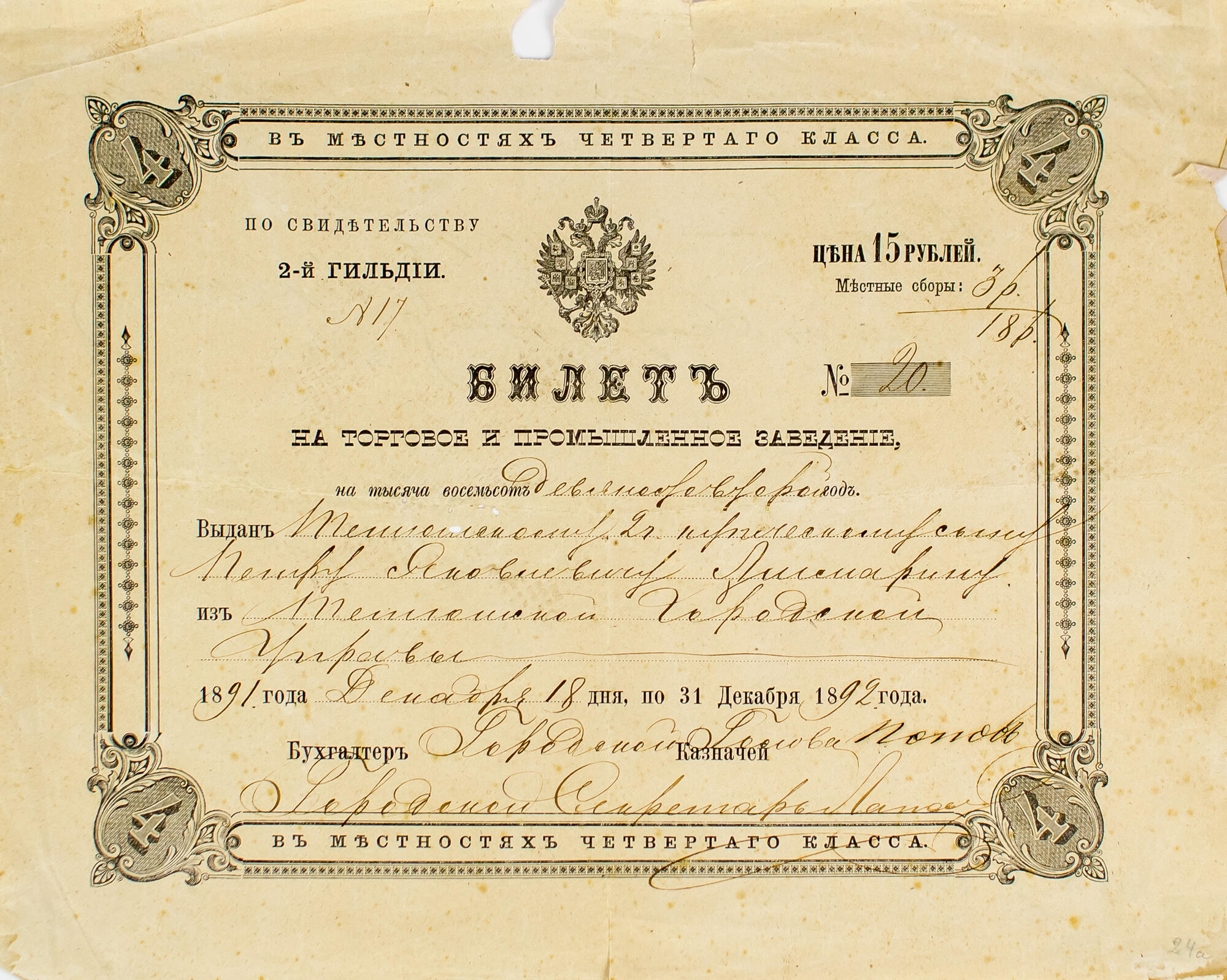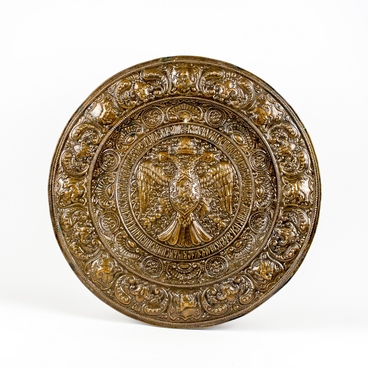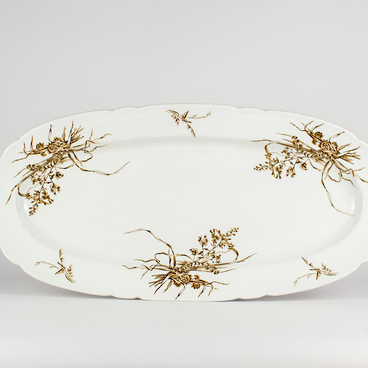Until 1863 there were three merchant guilds in Russia. The first included merchants with the capital from 500 to 1000 rubles, the second — from 1000 to 10 thousand rubles, the third — from 10 thousand rubles and above. Small traders, craftsmen and hired workers, who were not included in the guilds, were considered petty traders (meschane).
Merchants with a capital of more than 50 thousand rubles were included in a special category of “honored citizens”. Together with the merchants of the first guild they received the preferential right to be engaged in foreign trade. In addition, members of the first two guilds were exempt from corporal punishment, military recruitment and poll tax charge.
A merchant could only be called a merchant if he bought a guild certificate. It cost from 1 to 5 percent of the capital declared by the merchant. The guild levies had to be paid annually: unlike other estates (soslovie), being a merchant was not a lifelong thing.
Under the laws of 1863 and 1865 the rights of merchants were granted to citizens who had purchased their patent and paid their ticket fees for commercial and industrial establishments. The number of merchant guilds was reduced to two. Accordingly, trade patents or guild merchant certificates were also divided into two classes.
Trade and industrial establishments could be opened only after obtaining a certificate. The certificate of the first guild gave the right to trade wholesale Russian and foreign goods throughout the country. With it one could maintain factories and plants and conclude contracts for transportation and delivery of goods everywhere with no limits on the amount.
A merchant of the second guild could conduct retail trade within the city and county, run manufacturing establishments and take on contracts for the delivery of goods to the amount not exceeding 15 thousand rubles.
It was possible to obtain a trade certificate from the town council during the whole year. But it could be renewed only from November 1st to January 1st. Along with the certificates in the 1860s the so-called “ticket fees” (bilety) for commercial and industrial establishments were introduced. Merchants of the first guild could own no more than ten such establishments and members of the second guild — no more than five.
Merchants with a capital of more than 50 thousand rubles were included in a special category of “honored citizens”. Together with the merchants of the first guild they received the preferential right to be engaged in foreign trade. In addition, members of the first two guilds were exempt from corporal punishment, military recruitment and poll tax charge.
A merchant could only be called a merchant if he bought a guild certificate. It cost from 1 to 5 percent of the capital declared by the merchant. The guild levies had to be paid annually: unlike other estates (soslovie), being a merchant was not a lifelong thing.
Under the laws of 1863 and 1865 the rights of merchants were granted to citizens who had purchased their patent and paid their ticket fees for commercial and industrial establishments. The number of merchant guilds was reduced to two. Accordingly, trade patents or guild merchant certificates were also divided into two classes.
Trade and industrial establishments could be opened only after obtaining a certificate. The certificate of the first guild gave the right to trade wholesale Russian and foreign goods throughout the country. With it one could maintain factories and plants and conclude contracts for transportation and delivery of goods everywhere with no limits on the amount.
A merchant of the second guild could conduct retail trade within the city and county, run manufacturing establishments and take on contracts for the delivery of goods to the amount not exceeding 15 thousand rubles.
It was possible to obtain a trade certificate from the town council during the whole year. But it could be renewed only from November 1st to January 1st. Along with the certificates in the 1860s the so-called “ticket fees” (bilety) for commercial and industrial establishments were introduced. Merchants of the first guild could own no more than ten such establishments and members of the second guild — no more than five.



